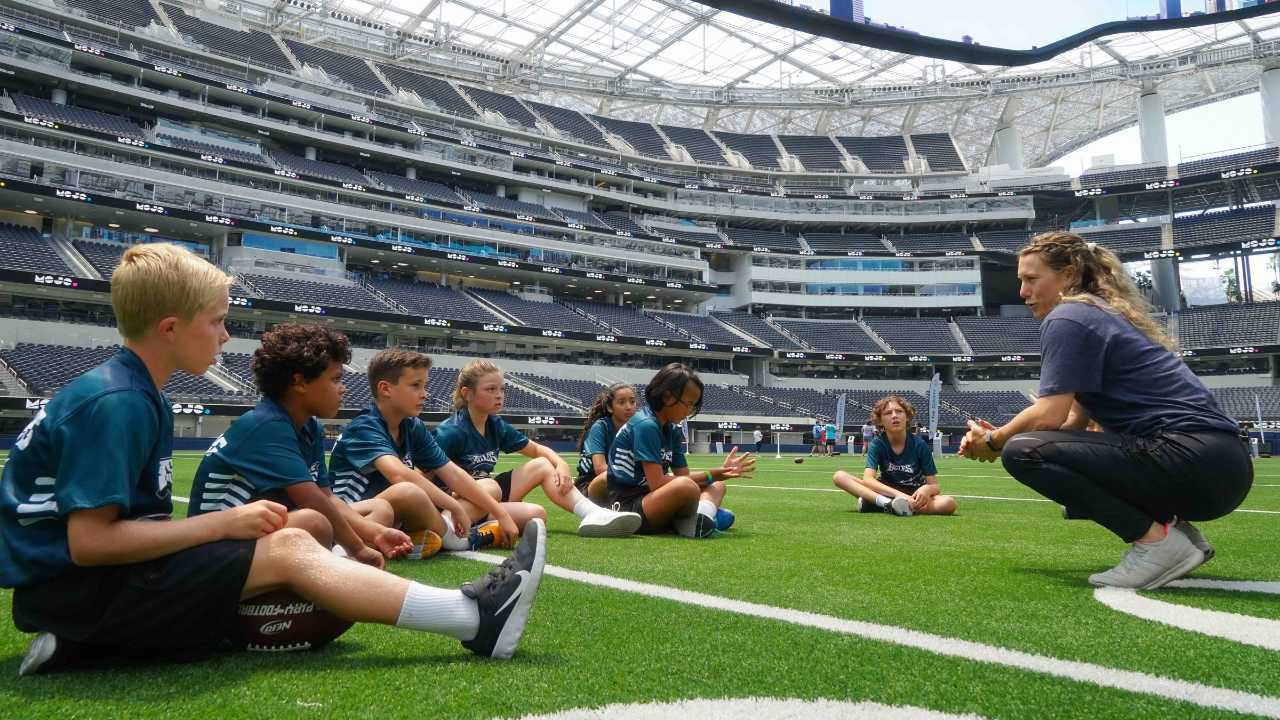The Fine Art of Flag Pulling
This crucial defensive skill is at the heart of flag football
Ashley Ross
| 4 min read

MOJO
Picture this: You’re a kid on a flag football field, and the ball carrier is coming your way fast, with a flag on each side. How do you effectively — and safely — pull one of the flags to stop them?
Flag pulling is an essential part of flag football — and also one of the hardest skills for new players to learn, according to Madison Ciurciu, the defensive captain for the Ramapo High School flag football team in New Jersey. “Your opponent is moving and the flags are moving at the same time,” explains Ciurciu. That’s where the art of flag pulling comes in.
Forget the ball
When it comes to flag football, one must learn to ignore the sports truism, Keep your eyes on the ball.
“You have to look at her hips because when you go to grab the flag, if you look at the ball and she turns, the flag is gone,” explains Ciurciu.
Practice makes perfect
An experienced player, Ciurciu uses both individual and team activities to practice flag pulling. “We’ll split the defense up into two lines facing each other, with one side offense and the other side defense,” she says. “We run straight at each other, and the offense tries to spin or do a sidestep to distract the defense, and the defense is trying to watch her hips and go straight on and pull the flag.”
“We also get in a circle and have everyone go after each other,” Ciurciu says. “It makes players realize that when you have the ball, there are a bunch of people going after the flag. It creates the mindset that it’s not one person’s responsibility to go after the flag just in their zone.”
Flag pulling fundamentals
Effective flag pulling is also one of the first things new players need to learn. Dwight Braswell, who goes by the name Coach D, immersed himself into flag football coaching seven years ago when his son Noah started playing the game. He focuses on one of the most important parts of the flag pulling: technique.
Get big. “The first thing I teach is getting big and getting low,” he says. “That creates a barrier for the runner no matter your size.”
Watch the waist. Then it’s about teaching young players where to look. “You want to follow the waist, or sometimes the belly button, but not the eyes or the feet,” he adds.
Go for the top. Braswell suggests using a bearhug technique to pull flags, particularly by going for the top of the flag (or handle) located closest to the belt.
“If you pull at the bottom or middle of the flag when someone’s running, that will slip right out of your hand,” Braswell says. “I would tell players to grab it like it’s a 20-dollar bill, and I’d even run around with bills to practice that.”
Don’t forget the feet. Good footwork is another key component for flag pulling. “If players can learn to shuffle left and right to square up with the runner, and they’re in a comfortable stance where knees are bent with good balance and they’re not falling, then the player is in a position to make the play,” Braswell says.
Mastering the art
Eyes to the middle of the ball-carrier, arms wide, feet square: flag pulling requires full-body coordination, a science with plenty of artistry.
“You might miss the flag on your first try, but never give up,” Braswell says. “Just keep going after it.”
For more about proper flag pulling, check out:
What Is Flag Guarding?




